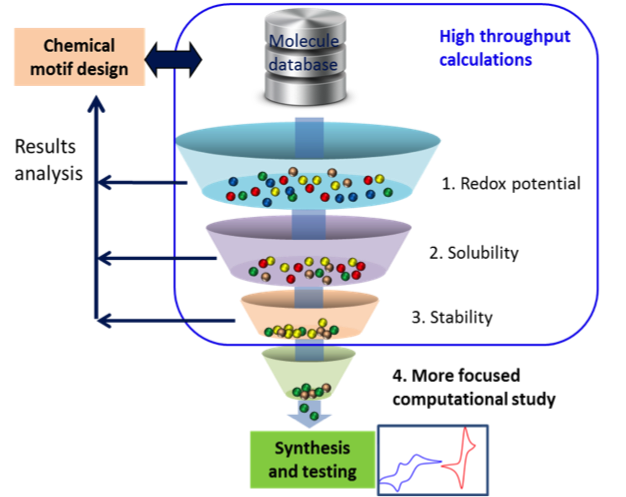
Research Details
JCESR is building a highly sophisticated infrastructure for high-throughput evaluation of molecular properties. This involves coupling ab initio DFT methods with rapid classic molecular dynamics, calculations of redox potentials, and solvation structure while more detailed reactivity studies are carried out. Candidates that meet performance metrics for different types of battery applications (redox-flow, Li-air, Li-sulfur and multivalent) are prioritized for synthesis and testing.
Scientific Achievement
- Development of a high-throughput software infrastructure for investigating correlations between electrolyte molecular structure and properties
- Correlation between functional group site and chemistry and redox potential has been elucidated for non-aqueous redox molecules
- Impact of solvation structure on multivalent electrolyte charge transfer and stability has been identified
Significance and Impact
- Design metrics for novel multivalent electrolytes and redox active molecules have been obtained
- The vast space of electrolyte combinations inhibit direct investigation of all possibilities. Hence, computer-driven high-throughput screening and design offers a more efficient and less expensive approach to develop high-performance electrolyte materials
Work performed at Lawrence Berkeley National Laboratory (JCESR Partner) Xiaohui Liu, Nav Nidhi Rajput, Anubhav Jain and Kristin Persson. Argonne National Laboratory (JCESR Managing Partner) Lei Cheng and Rajeev Assary. Massachusetts Institute of Technology Ziqin Rong, Piero Canepa, Rahul Malik and Gerbrand Ceder

